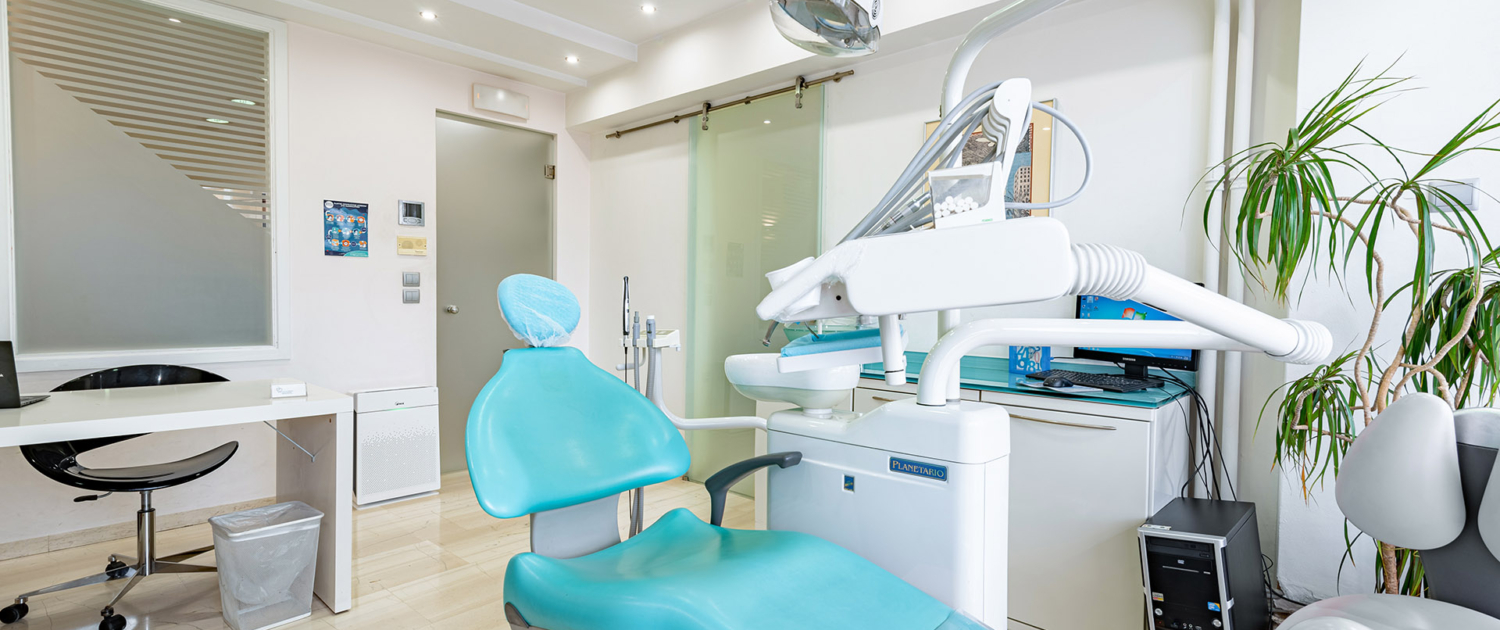What is a periodontist?
The periodontist is a dentist specialized in the prevention, diagnosis, and treatment of periodontal diseases (gingivitis and periodontitis). The periodontist has been trained for an additional three years after the dental school, attending a postgraduate specialization program in periodontology.
The periodontist deals with the jaw bone, the gums, the surface of the tooth root and the periodontium (fibres that connect the surface of the tooth root with its surrounding bone), both in terms of prevention and in terms of treatment and rehabilitation.
In addition, the periodontist takes care of the restoration of the aesthetics of the periodontal tissues and the placement of dental implants.
In the clinical routine, the periodontist treats gingivitis and periodontitis, deals with the treatment of endo-periodontal problems, plastic and resective surgery of the periodontium, hard and soft tissue reconstructions, surgical placement of implants and after specialized training he/ she can provide laser treatment as an adjunctive to the traditional treatment.
Finally, as a result of the scientific data of the last 15 years, the periodontist can develop close cooperation with cardiologists, diabetologists and other medical specialists, as periodontitis has been associated with serious systemic health problems, such as atherosclerosis, diabetes mellitus, obesity. etc.
When should I visit a periodontist?
The periodontist is advised to see each dental patient at the beginning and at the end of any dental treatment. The health of the periodontal tissues is a necessary condition for a proper restoration, otherwise it is like building castles in the air.
When the gums bleed, not even a single filling can be done properly, as the moisture in the area due to the bleeding gums does not allow the resins to adhere properly to the tooth. Inadequate adhesion of the resin can cause secondary caries which in turn can lead to tooth necrosis.
In addition, the haemoglobin of the blood does not allow the correct colour rendering of the filling and the inflammation of the gums that surround the tooth makes it difficult to obtain the appropriate morphology, shape and aesthetics!
Since all this applies to a simple filling (which is the simplest conservativeintervention), we can imagine what it means to place extensive prosthetic work in the clinical presence of periodontitis (even incipient), especially the placement of implants in diseased gums and bone due to incurable or inadequately treated periodontitis.
Loose teeth, what can a periodontist do?
When teeth are starting to get loose – and mobility is not due to an abscess or injury – then at least 50% of the bone support has already been lost.
Periodontal teeth may get loose for two reasons: the first is the obvious, bone loss and the second is because the fibres of the periodontium, that connect the tooth root to the surrounding bone, have loosened due to inflammation and the fluid that accumulates in the periodontium.
Placing loose teeth under extensive prosthetic restorations (bridges) in order for themto be stable, without having previously completed a periodontal treatment or simply doing a tooth cleaning, is literally criminal.
This is because the patient has the illusion that he/ she is fine as the mobility of his teeth “stopped”. In reality, however, the destruction of the bone continues without clinical symptoms, dumb and insidious until at some point the whole prosthetic restoration begins to get loose and in the end we are in the unpleasant position of removing it together with the overall prosthetic restoration.
It is noteworthy that in this case neither heavy bleeding is observed, as the inflammation has shifted deep to the bone, nor pain, because periodontitis is not clinically accompanied by severe pain.
The periodontist is therefore the specialized dentist who should complete the periodontal treatment before the prosthetic restoration begins and after its completion, he/ she should inform the dentist or prosthodontist about the prognosis of the teeth.
Together, they will design the prosthetic restoration so that the latter can be minimally invasive, safe for teething and periodontitis, with a long-term prognosis and as financially tolerable as possible!
At the end of the prosthetic restoration the periodontist should re-examine the patient in order to adapt the oral hygiene to the needs of the prosthetic work and to determine the recalls and the frequency of the teeth prophylaxis.
Only with the close supervision of the periodontist, in all the intermediate steps, will any prosthetic restoration be able to be successfully completed and maintained for a long time.
Orthodontic treatment and periodontist
Going into the field of orthodontic treatment, and after all that we have mentioned above, it now becomes self-evident that in order to start an orthodontic treatment for adolescents or adults, a thorough clinical examination of the periodontal tissues must have been performed. If gingivitis or periodontitis are detected, they should be treated or monitored before starting orthodontic treatment.
It is unthinkable to move teeth on inflamed gums and bone.
The role of the periodontist is also important during the orthodontic treatment of patients who do not have periodontal problems.
Orthodontic patients have, by definition, an objective difficulty in daily oral hygiene because of the foreign bodies that are on and around their teeth. The periodontist will guide and suggest the correct means and the appropriate techniques of effective oral hygiene for this special case of patients. In addition, he/ she will closely monitor patients in terms of teeth cleaning and, depending on the age group, fluoridation.
In this way gingivitis, periodontitis, caries and gingival recessions as events of a poorly designed orthodontic treatment are minimized.
In collaboration with orthodontists, the periodontist can perform minor surgeries such as resection of bridles, augmentation of keratinizedgums, aesthetic disclosure of a clinical mill, covering of a bare root, etc. before, during or after the completion of orthodontic treatment. , guaranteeing the completion of not only an aesthetic but also a completely biological and healthy result.
Finally, it is worth noting that orthodontics can assist, after the completion of periodontal treatment, in the aesthetic rehabilitation of patients suffering from periodontitis.

